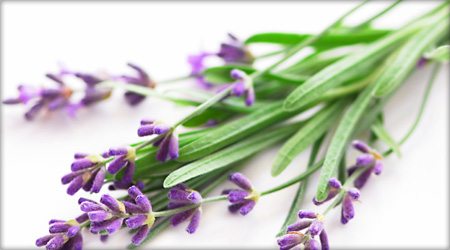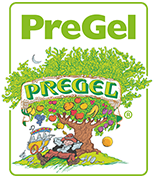
To many people, lavender represents the delicate color of light purple, and its scent can evoke thoughts of a warm summer evening breeze and colorful fields of wildflowers. Whatever the thought may be, the sweet-scented flowering plant of the mint family has much more to offer than warm thoughts and pretty visuals.

The Lavandula plant has been utilized in various ways for almost as long as the existence of mankind. Because of its delicate beauty, lavender is often employed as a decorative room accent and pleasant air freshener displayed in both bouquets and/or pots of potpourri. Lavender’s sweet scent is also the source behind the fragrance of many perfumes, cleansing soaps and nourishing body oils. In addition, lavender can be used as a wood tonic, insect repellent and as a medicinal enhancement in black, green and herbal teas to aid in healing ailments like migraines.
In relation to its grand array of practical uses, lavender is a great culinary weapon that adds beauty, color and floral flavor with hints of lemon and citrus. Use it to tantalize drinks, flavor condiments, spice up appetizers, create savory entrées and add a touch of sophistication to desserts. Cooking with fresh herbs enhances the flavor profile and visual appeal of culinary dishes, and fresh, edible flowers are reclaiming their presence on the menus of upscale restaurants, as well as in the kitchens of innovative chefs. Lavender can be incorporated into a dish or used for plate aesthetic. The spike or the stem of the plant works well in plated dessert designs or can be used in innovative creations, such as fruit kabobs.
Lavender is a large family of perennials made up of more than 30 species in existence. However, in the culinary arena, English lavender, often called L. vera or L. officialis, is the most widely used as a cooking herb.
While lavender is leading the way in herb enhancement in the kitchen, it is important not to add too much of the aromatic plant, which is always a concern for any seasoning or flavor. English lavender has the sweetest scent of its entire relative species, and a heavy dosage amount could ruin the overall desired taste of a chef’s creation. Using too much can produce a dish that tastes more like bitter perfume than tasty food.
It’s important to only use culinary grade lavender when applying lavender’s unique flavor to add a pinch of flair to edible creations. Culinary grade lavender is free from pesticides and other harmful chemicals that are not labeled for food crops, and are unsafe for human consumption.
The uses of lavender can go as far as the innovative imagination will allow. No matter what the culinary use, lavender is a menu-friendly herb with the ability to excite any drink or morsel that the palate desires, while successfully delighting the senses and seducing the eye.
Resources:
Culinary Lavender. (2010). Cooking With Lavender-How to Cook With Lavender
Retrieved April 20, 2010, from www.whatscookingamerica.net/lavenderhtm.
Relache. (2010). Cooking with Lavender Retrieved April 20,2010, from
www.hubpages.com/hub/cooking-with-lavender.
Wajda, M. (2010). Culinary Uses for Lavender Retrieved April 20, 2010,
from www.emmitsburg.net/cgi-bin/pf/mg/pf.cgi.
